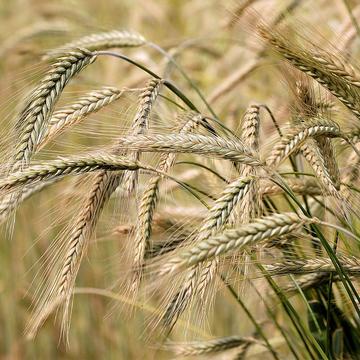New research from the University of Oxford, in collaboration with Cambridge and MIT, has established control of bacterial nitrogen fixation by cereals. This is a major breakthrough in establishing the ability of cereals, such as barley, wheat, maize and rice, to make their own nitrogen fertilizer in the form of ammonia.

The researchers have developed a kind of barley that can control rhizobia bacteria
Most of our food supply comes from cereals such as, barley, wheat, maize and rice. These crops need large quantities of industrially-produced ammonia fertilizer to create high yields and reach food demands.
Ammonia-based fertilisers are commonly used in industrial agriculture, and they has been produced through industrial processes on a massive scale since the early 20th Century. Whilst this does increase crop yields, it has had a catastrophic impact on the environment through pollution and greenhouse gas emissions.
Leguminous plants, such as peas, have been used in farming for thousands of years because of their ability to develop nodules on their roots which house bacteria called rhizobia. The rhizobia take nitrogen from the air and turn it into ammonia fertilizer for the plants.
A dream of farmers, agronomists and scientists is to transfer this ability to fix nitrogen from legumes to cereal plants.
But how can this process be controlled? In the research, led by Tim Haskett and Phil Poole, with collaborators in Cambridge and MIT the question has been answered.
They developed a kind of barley that produces a signal molecule called rhizopine that controls the genes in the rhizobia bacteria growing on plants roots. They showed that plants secreting rhizopine were able to control nitrogen fixation by the bacterium on its roots. The bacteria would only fix nitrogen on the barley which released rhizopine and not on any other plant.
This work is a key milestone towards the development of a synthetic plant-controlled symbiosis in which the bacteria fix nitrogen only when in contact with the desired host plant and not on the roots of non-host plants, such as weeds. It will enable plants to switch on bacterial nitrogen fixation and release the product ammonia to provide fertilizer to the plant.
“Biological nitrogen fixation is one of the key processes enabling more sustainable agricultural practices and has been the subject of extensive research efforts for decades. This work on developing plant control of bacterial nitrogen fixation is a key part of a large effort to transfer root nodulation and nitrogen fixation to cereals. This was only made possible through a great collaborative effort bringing together the work done by multiple labs over many years.”
Professor Philip Poole
To read more about this research, published in PNAS, please visit: https://www.pnas.org/doi/10.1073/pnas.2117465119